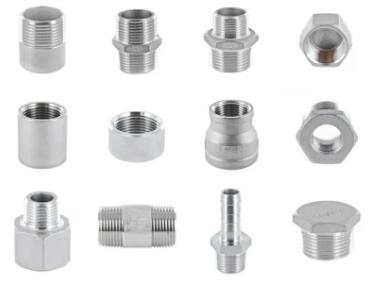Seamless Harmony: The Crucial Importance of Compatibility Between Pipe and Fitting Materials
2023-11-30
Introduction:
In the intricate world of plumbing and piping systems, where precision and reliability are paramount, the harmony between pipe and fitting materials plays a pivotal role. This blog delves into the crucial importance of compatibility between pipe and fitting materials, exploring the far-reaching implications of this seamless integration on the performance, longevity, and overall integrity of piping systems.
1. Foundation of System Integrity:
The compatibility between pipe and fitting materials lays the foundation for the integrity of the entire piping system. Mismatched materials can lead to corrosion, leaks, and structural failures, jeopardizing the efficiency and reliability of the system.
2. Prevention of Galvanic Corrosion:
One of the primary concerns when dealing with different materials is the potential for galvanic corrosion. When dissimilar metals come into contact in the presence of an electrolyte, such as water, corrosion can occur. Ensuring compatibility helps prevent galvanic corrosion, preserving the longevity of the pipes and fittings.
3. Optimal Performance Under Varied Conditions:
Pipes and fittings are exposed to a variety of environmental conditions, including temperature fluctuations, pressure changes, and exposure to different substances. Compatibility ensures that the materials can withstand these conditions without compromising their structural integrity, ensuring optimal performance over time.
4. Seal Integrity and Leak Prevention:
The compatibility between pipe and fitting materials is critical for maintaining a reliable seal. Mismatched materials may lead to improper connections, increasing the risk of leaks. A secure and durable seal is essential for the efficient functioning of the piping system and preventing wastage of resources.
5. Minimization of Material Breakdown:
Incompatible materials can undergo accelerated wear and breakdown due to chemical reactions, leading to the deterioration of both the pipes and fittings. Choosing compatible materials minimizes the risk of breakdown, preserving the aesthetic and functional aspects of the entire system.
6. Mitigation of Material Degradation:
Certain materials may be prone to degradation when exposed to specific substances. Compatibility considerations help mitigate material degradation, ensuring that pipes and fittings maintain their structural strength and performance characteristics over the long term.
Conclusion:
In the complex tapestry of plumbing and piping systems, the importance of compatibility between pipe and fitting materials cannot be overstated. It is a foundational principle that resonates through the reliability, efficiency, and longevity of the entire system. As industries continue to prioritize seamless integration and performance in their piping systems, the mindful selection of compatible materials remains an indispensable element in the pursuit of engineering excellence.



